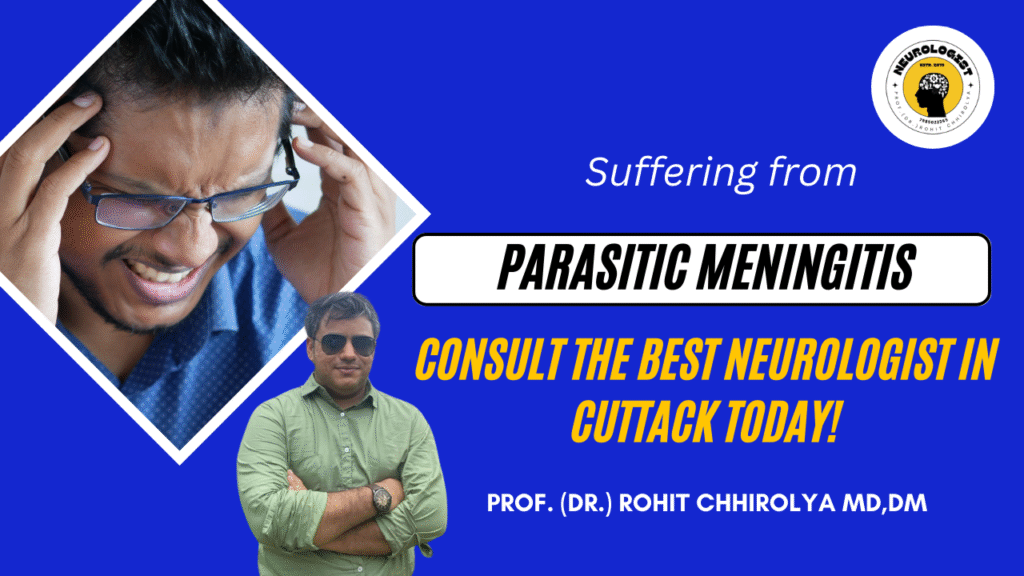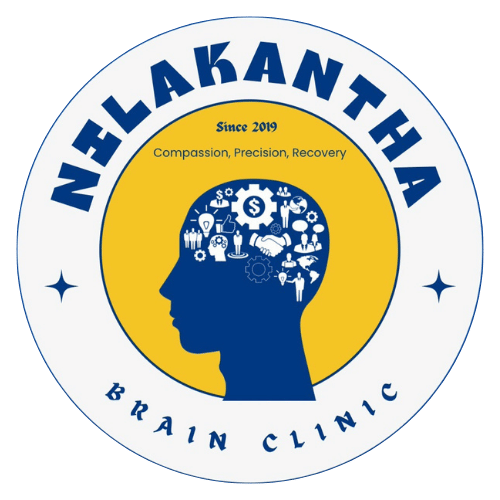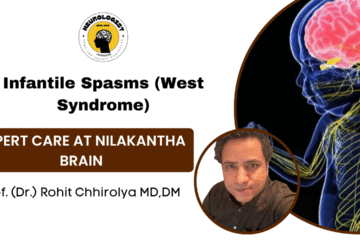
What is Parasitic Meningitis?
Parasitic meningitis, a rare but devastating infection of the brain’s protective membranes, is caused by parasites invading the central nervous system. With symptoms ranging from headaches to life-threatening coma, early intervention by the top neurologist in Cuttack is critical. This guide covers causes, treatments, and why Nilakantha Brain Clinic is Odisha’s trusted center for neuroparasitic care.
Parasitic meningitis occurs when parasites (e.g., Angiostrongylus, Naegleria fowleri) infect the meninges. Unlike bacterial forms, it’s often linked to contaminated water, soil, or undercooked food.
Critical Facts:
- Fatality rates exceed 95% for Naegleria fowleri (brain-eating amoeba).
- India reports 200+ cases annually, with coastal regions like Odisha at higher risk.
- Delayed diagnosis leads to permanent brain damage or death.
Symptoms: Recognize Before It’s Too Late
Early Signs (1–7 days):
- Severe frontal headache
- Nausea/vomiting
- Stiff neck
Advanced Symptoms (7–14 days):
- Altered mental state (confusion, hallucinations)
- Loss of balance
- Seizures
- Coma
Red Flags:
- Sudden fever after swimming in warm freshwater
- Unresponsive to standard headache meds
Act Immediately: Visit a neuro doctor near me if these appear.
Causes & Risk Factors of Parasitic Meningitis
1. Common Parasites
- Naegleria fowleri: Enters via contaminated water during swimming.
- Angiostrongylus cantonensis: From raw snails/slugs (common in Odisha’s coastal cuisine).
- Gnathostoma: Undercooked fish/frog meat.
2. High-Risk Activities
- Swimming in warm ponds/lakes
- Consuming raw seafood
- Agricultural work in parasite-endemic areas
Diagnosis: Advanced Techniques in Cuttack
The best neurologist doctor in Cuttack uses:
- Lumbar Puncture:
- Elevated CSF eosinophils (indicating parasites)
- PCR testing for parasite DNA
- MRI/CT: Detects hemorrhages or abscesses.
- Serology: Blood tests for parasite antibodies.
Why Choose Nilakantha?
Dr. Rohit Chhirolya, a top neurologist in Cuttack, offers India’s only Naegleria PCR test with 99% accuracy.
Treatment Protocols for Parasitic Meningitis
1. Antiparasitic Medications
- Naegleria: Amphotericin B + Miltefosine (survival rate <5% even with treatment).
- Angiostrongylus: Albendazole + corticosteroids.
- Gnathostoma: Ivermectin + surgical removal of larvae.
2. Supportive ICU Care
- Brain Swelling Management: Mannitol, dexamethasone.
- Seizure Control: Anticonvulsants like phenytoin.
3. Surgical Interventions
Removes parasitic cysts or relieves intracranial pressure.
Recovery Timeline:
- Survivors: Require 6–24 months of neuro-rehab.
- Mortality: >90% for Naegleria; 10–30% for other parasites.
Expert Insight: Dr. Chhirolya, the best neurology specialist in Cuttack, stresses that early treatment within 48 hours is vital.
Prevention Strategies
- Water Safety:
- Avoid swimming in warm stagnant water.
- Use nose clips if entering freshwater.
- Food Precautions:
- Cook seafood/snails thoroughly.
- Wash produce with vinegar water.
- Travel Protection:
- Avoid parasite-endemic areas during monsoon.
Why Consult a Neurologist in Cuttack?
Parasitic meningitis is often misdiagnosed as migraines or viral encephalitis. A best neurologist near me ensures:
1) Rapid parasite-specific testing.
2) ICU management for brain swelling.
3) Long-term neuro-rehabilitation.
Finding the Best Neurologist in Cuttack
Key Selection Criteria
- Neuroparasitology Experience: 10+ cases managed.
- ICU Access: For emergency antiparasitic infusions.
- Rehab Partnerships: Cognitive/physical therapy post-recovery.
Cuttack Neurology Doctor List
- Dr. Rohit Chhirolya, DM (Neurology)
- Clinic: Nilakantha Brain Clinic
- Expertise: Parasitic CNS infections, neuro-critical care.
- Contact: 📞 7985022365 | 🌐 Emergency Appointment
FAQs
Q1: Is parasitic meningitis contagious?
A: No! Spread via contaminated water/food—not person-to-person.
Q2: Can tap water cause Naegleria infections?
A: Rare. Only if contaminated freshwater enters the nose.
Q3: How much does treatment cost in Cuttack?
A: ICU care: ₹25,000–₹50,000/day. Antiparasitic drugs: ₹10,000–₹20,000/day.
Q4: How to find a “neuro doctor near me”?
A: Search “cuttack neurology doctor list” or visit Nilakantha.
Q5: Are there vaccines for parasitic meningitis?
A: None exist. Prevention is key—avoid risks.
Q6: Can pets transmit parasites to humans?
A: Indirectly. Dogs/rats carry Angiostrongylus—wash hands after contact.
Q7: Why choose a neurologist over an infectious disease specialist?
A: Neurologists manage brain-specific complications (hydrocephalus, seizures).
Q8: If parasitic meningitis is so rare, why do we hear about cases?
A: While statistically rare, cases often receive significant media attention due to their extreme severity (especially PAM) and frightening nature. Additionally, some parasites (like Angiostrongylus cantonensis) are expanding their geographic range due to factors like climate change and global travel/trade, leading to outbreaks in new areas.
Q9: Is everyone equally susceptible to parasitic meningitis?
A: No. Susceptibility depends heavily on exposure risk:
Naegleria fowleri (PAM): Primarily affects healthy children and young adults engaging in freshwater activities in warm regions. It’s unclear why some exposed individuals get infected while most do not.
Angiostrongylus cantonensis (Eosinophilic Meningitis): Risk is higher for individuals consuming raw or undercooked snails/slugs, contaminated produce, or possibly infected crustaceans (like prawns/crabs). Children might be more likely to ingest small snails/slugs accidentally.
Other parasites: Risk relates to exposure in endemic areas (e.g., eating undercooked pork/meat for Trichinella, specific snail exposure for Gnathostoma).
Q10: Why is diagnosis so challenging?
A: Several reasons:
Rarity: Doctors may not initially consider it.
Early symptoms: Mimic common viral meningitis or other illnesses (headache, fever, nausea).
Specific tests needed: Requires specialized microscopy (looking for amoebae in CSF), PCR testing, or antibody tests not routinely available everywhere.
CSF findings: Eosinophilic meningitis is a key clue for parasites like Angiostrongylus, but eosinophils can take days to appear or be caused by other conditions (like certain drugs or fungal infections). Finding the actual parasite (like Naegleria) in CSF is difficult.
Q11: Are there any new or experimental treatments showing promise?
A:PAM (Naegleria): The experimental drug Miltefosine, combined with aggressive multi-drug therapy (amphotericin B, rifampin, azithromycin/fluconazole) and therapeutic hypothermia, has shown success in a few recent survivors when administered early. Access to Miltefosine can be critical but challenging.
Eosinophilic Meningitis (Angiostrongylus): Treatment focuses on managing symptoms (pain relief, repeated CSF drainage). Anti-parasitic drugs (like albendazole) are controversial as they might worsen inflammation by killing larvae; steroids remain the mainstay. Research into optimal management continues.
Q12: Can climate change affect the risk of parasitic meningitis?
A: Yes, significantly, particularly for waterborne parasites:
Naegleria fowleri: Thrives in warm water (above 80°F/27°C). Rising ambient temperatures and more frequent/longer heat waves expand its potential habitat and season.
Angiostrongylus cantonensis: Warmer temperatures allow its intermediate hosts (snails, slugs) and the parasite itself to survive and reproduce in regions previously too cold. This contributes to its spread beyond traditional tropical/subtropical zones.
Q13: Can my pet give me parasitic meningitis?
A: Direct transmission from pets to humans is extremely unlikely for the primary parasites causing meningitis. However:
Pets (especially rodents, but sometimes dogs) can be infected with Angiostrongylus cantonensis and shed larvae in their feces. While humans typically get infected by eating infected snails/slugs, theoretically, contact with contaminated pet feces could pose a very low risk if hygiene is poor (though not a common route).
The main risk is pets potentially bringing infected intermediate hosts (snails/slugs) into the yard or home environment. Always wash hands after handling pets or cleaning up after them.
Q14: How long after exposure do symptoms typically appear in parasitic meningitis ?
A: The incubation period varies:
PAM (Naegleria): Very short, usually 2-10 days (average 5 days) after contaminated water enters the nose.
Eosinophilic Meningitis (Angiostrongylus): Longer, typically 1-3 weeks (sometimes up to 6 weeks) after ingesting the parasite.
Other parasites (e.g., Gnathostoma, Baylisascaris): Variable, often weeks.
Q15: Is there any way to disinfect water to kill these parasites?
A: Yes, but methods differ:
Naegleria fowleri: Killed by boiling (1 minute rolling boil at sea level, 3 minutes above 6,500 feet), proper chlorination, and filtration using a filter labeled for “cyst” removal (NSF 53 or 58 standard). It is NOT reliably killed by UV light alone, salt water, or standard alcohol-based disinfectants.
Angiostrongylus cantonensis larvae: Killed by thorough cooking (core temp >165°F/74°C) of snails, slugs, crustaceans, and transport hosts (frogs, land crabs). Boiling or cooking contaminated produce kills larvae. Freezing may not be reliable for all species/stages. Vinegar or washing doesn’t reliably kill them embedded in produce.
Q: Can using a neti pot or nasal rinse cause parasitic meningitis?
A: Yes, using contaminated tap water in a neti pot or nasal irrigation device is a documented route of infection for Naegleria fowleri (PAM). Always use water labeled as sterile, distilled, or previously boiled (and cooled) for nasal irrigation. Do not use untreated tap water.
Q: If I suspect I or someone else was exposed to parasitic meningitis, what should I do immediately?
A:Seek medical attention immediately, especially if symptoms develop. Be very specific about the potential exposure:
For Naegleria risk (recent warm freshwater nasal exposure): This is a medical emergency. Go to the ER and explicitly state the concern about Naegleria fowleri exposure and meningitis.
For Angiostrongylus risk (ingesting raw snails/slugs or potentially contaminated food): Contact your doctor or go to urgent care/ER if severe symptoms develop. Inform them about the specific exposure.
There is no proven effective preventive medication after exposure but before symptoms start. Early diagnosis and immediate aggressive treatment offer the best chance for PAM survival and managing eosinophilic meningitis.
Every Minute Counts
Parasitic meningitis is a race against time. If you suspect exposure or symptoms, contact Cuttack’s top neurologist, Dr. Rohit Chhirolya, at Nilakantha Brain Clinic. With cutting-edge diagnostics and 24/7 neuro-ICU, we fight for your survival.
Don’t Delay—Save a Life Now!
📞 Call 7985022365
🌐 Visit Nilakantha Brain Clinic
Stay Updated:
- Health alerts on Facebook.


